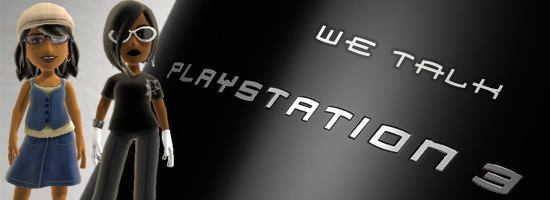People have been
talking and
talking and
talking about
turn-based gaming and whether it is realistic, enjoyable, profitable, sufficiently modern enough, and if non-turn-based gaming is even implementable. The problem with addressing a subject this complicated is that you cannot simply look at what is available or in use today and make a decision based upon that.
Unfortunately for some, but I think fortunate for most, is the fact is, this will in be a giant piece, equal parts editorial, rant, history lesson, gaming paradigm discussion, or whatever else you care to call it. The simple fact is, this audience is primarily gamers. And gamers, despite the generally incorrect characterization, have a pretty solid attention span and focus when it comes to gaming.
So let's dig in, shall we? The attention-span impaired can skip ahead to the last two paragraphs, but you'll miss all the juicy links and explanation defining these answers.
We have a document thusly composed:
- The History of Turn-based Gaming
- The State of Turn-based Gaming (and attitudes)
- Where Turn-based Gaming is going (and attitudes)
I will be talking about games in their entirety, so you may find something you think is a spoiler. If you don't like that, you're a whiny baby.
The History of Turn-based Gaming
Pong. There, I've said it. If we go way back in the annals of video games, we start at Pong. I think, therefore, we can say that video gaming started as turn-based. If we go further back, beyond video gaming, and discuss games like Chess and Mahjongg and Go, we see still more turn-based gaming.
Even sports are largely turn-based. In American football, turns are very clearly defined. In Soccer, the turns are also defined, but are not formally delineated — I have the ball, therefore it is my turn. One can make an argument that this is actually a real-time strategy game, but the argument is incorrect; if Soccer (and Hurling, and Lacrosse, and Polo) were real-time strategy games, everyone would have a ball (many-to-many; more later). There would not be this notion of it is my and only my turn to act. The fact that we can intercept the ball or take out the person with the ball does not change the fact that it was their turn to act with the ball, and your turn to deprive them of their turn.
Some of you may have seen a parallel here between sports and video games already. A perfect example of this would be the "bomb carrying" games, such as that in Unreal Tournament. One team had the ball (a bomb), and their objective was to deliver it to the enemy base, thus scoring a point. The opposing team's objective was to deprive the attacking team of their ball — but there was one ball. A minor digression here is that Capture the Flag is somewhat more of a real-time game than the deliver-the-bomb type games. In general, in CTF, a team can focus entirely on defense, offense, or a mixture of both. Frequently teams will have "campers" whose job it is to defend the flag, even at the cost of their own lives.
I would definitely be remiss not to mention role-playing games (rôle, to be very specific about the wording), which will hereafter be referred to as RPGs. Unless I have missed some strange one (and I admit I have not participated in any LARPing), actual paper-pencil-and-dice RPGs are turn-based. I'm going to lump in the collectible card games here as well (such as Magic: The Gathering and the various Japanese flavors).
So, where then, do we actually find non-turn-based gaming? In the history of video games, there have been very few games which are not turn-based. There is a segment of games, such as Kung Fu, Karnov, Contra, and Double Dragon on the 8-bit Nintendo (hereafter simply 'NES'), as well as Shinobi, Ninja Gaiden, Galaga, Gauntlet, and Centipede in the arcade, that are not explicitly turn-based. However, I am going to call them "flow-based" as they are not real-time, either. In fact, when these games started appearing on the NES, manufacturers started producing controllers with adjustable "turbo" buttons. With these new buttons, an adjustable rate of "fire" (that is, pushing of said button) could be programmed into the controller. This meant you could program (more on programming in realtime gaming later) your controller to respond to the "flow" of adversaries or obstacles more precisely than you could nominally do with your own thumbs.
Typical side-scrollers, like Super Mario Brothers (almost all of them), Castlevania, and other adventure-side-scrollers were also flow-based games. Despite the fact that you stopped and looked around to smell the roses, graves, giant green pipes, and so on, you weren't doing that in real time because you couldn't decide that you needed to go all the way back to the beginning and let things happen differently. It was formulaic and therefore not what people are looking for in real-time gaming today.
First person shooters, for the most part, are flow-based games, as well. In the typical rules (annihilate anything in front of you, with the occasional puzzle, such as in the Resident Evil and Silent Hill series, as well as the more recent Gears of War, and going back to Wolf3D, Quake, and Marathon), enemies come towards you in what feels like real time. However, except in very rare circumstances do we actually see the scenery/setting/enemies change in real time. This condition, that FPS games are actually flow-based, changes as intelligence is added (and I do not mean "bot" opponents). The more people you add to this system, the more chaotic it becomes, and the closer to realtime FPS become. Of course, if you add rules to the game as rapidly as you add players, you lose what makes it more real-time and it takes on a much more turn-based feeling. Consider the gradient between:
- Free-for-all Deathmatch
- Team Deathmatch
- Assault
- Capture the Flag
(Apologies; Assault isn't in all games. I first found it in Unreal. It's essentially an assault-the-beachhead, occupy the capitol type game)
There is a very clear gradient there from less to more turn-based rules. Of course, not on the list is "one-player" which is flow-based, and variations on the games (like "no respawn" or "time to respawn" modifications to Deathmatch) which make them even explicitly turn-based.
But flow-based games are not, as I said, real-time, and they are not what gamers are looking for today. So let us look elsewhere. Combat games come very close to real-time strategy, for the most part. This is primarily because the fewer rules there are to combat, the less chance there is of some sort of "turn" creeping into the gameplay. It has been a long time since armies advanced on eachother in firing lines (er, maybe since the advent of marines?), spending time in between shots to reload and fire again at their standing opponents. Today, combat happens largely randomly. Nobody really wants to get into a fight on the enemy's "turn" to defend, and so we spend much of our time coming up with ways to disrupt the enemy's defense by using stealth, extra dimensions (air support, subsurface support), and outmoded weaponry (artillery and other siege weapons). When we replicate this in a game, we largely see real-time gaming happen. This is a very important point, and is discussed later.
To confirm that gaming accurately reflects combat (at least technically), we can look at war and at combat sports. Consider the UFC an other "mixed martial arts" organizations. With simple rules like "no eye gouging" and "no digit manipulation", the simplest rules apply: beat the living hell out of your opponent. What we miss is the more subtle lack of rules, but huge divergence in techniques. One need only see Royce Gracie defeated by Matt Hughes to know that truly mixed multiple arts (and the latter's being a complete thug) that sticking to one set of rules (that of Brazilian Jiu-Jitsu) is a good way to lose your turn. Hughes was able to manage the BJJ, as well as more typical manipulations, and in the end resorted to "beat the living hell out of your opponent with your elbows." The latter technique is not really taught in Gracie Jiu-Jitsu. Or Judo. Or Tae Kwon Do. Or Shaolin Kung Fu. But if you mix all those things up, you create an entirely chaotic system with zillions of interacting rules and techniques. It's no longer "if he grabs an arm, roll your hips," because that might get your ass into a kimura instead of around his side and onto his back.
The same, of course, applies to warfare. The only real rules we have are "No nuclear/biological/chemical weapons." Many of the rules and expectations of war are created after the fact, rather than before. We don't go into war agreeing on the weapons we'll use, where we'll use them, and other things we kind of sort out afterwards. The Poles learned this in WWII, when they responded to Stukas and the general Blitzkrieg with... Cavalry. The point is that combat leaves us with largely real-time systems, based entirely on their huge complexity.
Gaming consoles are getting to be downright beefy. They support incredibly complicated programs and storage. In theory, we can support a large set of combat (e.g., program in 255 different weapons, and arm 16,535 orcs and elves, and as they say, let god sort em out). This is mostly a good thing, since what most people are asking for is more real-time based combat, and less turn-based combat. I think we can show, however, that despite people whining and begging for real-time combat, their past behavior and buying trends have been quite the opposite. We can also discuss the "why" of this in some detail.
The State of Turn-based Gaming
I don't know whether it started there, but certainly one could say that a lot of the fracas surrounding real-time based gaming started with the Final Fantasy 10, 11, and 12 (hereafter FFX, FFXI, and FFXII, respectively) games. Square, who is one of those companies that likes to push the envelope a little (you know, the same way you can't help but push on an ugly bruise you've got, or to wiggle a broken finger), and they decided that after FFX, which was decidedly turn-based, that they were going to do away with that model, and instead try something new: real-time combat (and real-time character/npc interaction) in an RPG.
The reason for this is people had been bitching about how tired turn-based RPGs were getting. It was almost as though you could change the dressing, the costumes, and so on, and the engine was the same. Good guys on the left or right, bad on the opposite side, and spells and weapons that crossed the gulf between them.
What people forget is that older games, including Final Fantasy (FFIII for example, was still a sideways-action game, but the turns were taken in real-time), were changed in the past to be more turn-based and less real-time. Let's look, for example, at a game people probably didn't expect me to bring up: Street Fighter II. I think everyone has actually played this game at one time or another, so it makes a good example.
When it first came out, it was pretty raw. People liked the characters and the story even (characters like Sagat, Dhalsim and Bison/Balrog were interesting at the time, and Chun-Li was just hot), but there were particular things you could do that rendered an opponent's ability to fight null. There were some interesting combinations, such as with Guile, a flying strong, followed by a sonic boom, followed by a roundhouse. These sorts of combinations would not only not be blockable (partly because of the low-high model of fighting/blocking), but would take off enormous portions (half to all) of an opponents HP.
People squealed and whined. No longer could characters perform these kinds of combos. Or, rather, in newer releases, the combos just didn't work. In order to come up with damage combinations like that, one had to perform some pretty skillful work, and your average Shoryuken didn't really do much unless the opponent wasn't paying attention.
And so the game evolved into where it was when it sort of became stagnant: moves happen much more quickly, do less damage, there are more characters and thus many more moves, and so on. What happened, for those that missed it, is the game became much more complicated. It tended from a very small set of characters (eight) to a very large set of characters (what, thirty?) with dozens of moves. This is called entropy. And, as we've seen above, entropy, chaos, is where we get the perception of "real-time" gaming. It is, precisely, the lack of rules, or so many rules that effective systems to exploit them do not exist.
So why is a more chaotic, complex system, which is what people were asking for, received so poorly? People stopped playing SFII not when Mortal Kombat (you know you want it) or Soul Calibur came out (or Tekken or anything else at the time). They stopped when SFIII Super Phantomic came out and you couldn't tell what the hell was happening. Ryu, Ken, and Akuma (who is Akuma again?!) were all different and had these enormous bodies and silly moves, Guile was a chick called Cammy, and Bison had sort of ingested a whole lot of Blanca. I digress, but the point is, they took a simple, uncomplicated model, made it very complicated, and people hated it.
Where Turn-based Gaming is going (and attitudes)
So let me first start this section by telling you why you're wrong. I'm just that kind of guy. The problem is that every time somebody has made a system that approaches real-time, an angry mob of users have come after the developers with pitchforks and torches bitching and moaning about how complicated it is, and how much better it was when it was less complicated. If only they'd bump the revision, make the game prettier, easier to play, and have more content, it would be much better.
Let's examine it a little. The more chaotic a game gets (don't misunderstand this; a game gets more chaotic the more rules it gets), the more it resembles real-time. The more turn-based a game becomes, the easier it is to play, to get used to, the smaller the slant on the learning curve, and the better its adoption becomes.
A good example of this is an early RTS game, called Harpoon. This was available for the Mac (and I guess Windows), and had at least three major revisions. So at least five people have played it. I'm one of them. The notion was a hot cold war. NATO vs the USSR. It was really cool in later editions, when they included "scenario editors." I could take every airfield NATO owned, and equip them with thousands of F-14's toting AIM-54's, every single Russian base with even more TU-16's, and do the same with surface and subsurface warfare. Thankfully, I didn't have to control all this. It was incredibly complicated to have fifteen thousand (or more!) units all interacting in an area that spanned from Maine to Oslo to Gibraltar and Turkey. There were lots of rules: a Tomahawk TLAM has a range of 1100 nautical miles. So even if you manage to fire off 5,000 of them, and they're all TLAM-N, but you're 1150 nm away, you aren't going to blow up your target (silly, right? that's a gigaton!). Your helicopters fall out of the sky if they fly more than 400 miles (which isn't true of Pave Hawk/Pave Low, but then Harpoon didn't have any SOCOM operatives). Your submarines aren't useful if they run aground. SOSUS can detect you if you're not really sneaky. I could go on. The point is, nobody can keep up with all this system. It's got hundreds of rules, so it appears very ordered. However, what we experience is sheer chaos.
On the Positive Side
The process of developing a spend plan forces commanders to look at their resource requirements and gives resource managers (RMs) their best chance to ensure that the command's expenditures are fiscally responsible. This is a good first step because validating requirements is important.
On the Negative Side
First, requirements in a contingency environment tend to be fluid. What a commander considers mission essential today can be an afterthought tomorrow. Second, current financial management systems were not designed to tie unit spend plans to actual execution. Third, physically separated RMs and unreliable communications equipment can lead to miscommunication and imperfect fiscal situational awareness.
We should also talk about where real-time gaming can and cannot go. The easiest example of real-time combat is, well, combat. Can you tell whether the above is referring to a more structured combat or a less structured combat? What the author is describing is applying an enormously complex set of rules to encompass an enormously complex, theoretically rule-less scenario: combat in Afghanistan.
Combat happens in a many-to-many (purchase; it's about US$30) situation. Many marines engage many guys in sweatpants with automatic rifles and rpg's. The only reason this works at all is that each marine has (ostensibly; it depends on who you ask) a brain, each badguy (same disclaimer) has a brain, and everyone is using their brain to attack the other side. They attack as many as they are able to at once, but no more, and generally, no less. An RPG has a blast radius of X feet, marines have a density of Y marines per X feet radius, and therefore the guys in sweatpants attack Y/X marines at once. We can extrapolate this to automatic rifles, hand grenades, atom bombs, and so on (the RPG link is in eXile #189; they're changing formats, so it won't last forever).
Final Fantasy moved from left-to-right turn based stuff to a semi-realtime "thingy" with FFXII. They're apparently "improving" on this in FFXIII. Where can it go? Well, it can take the approach of FFXI and add more brains to the solution (this is the one and only mention I will make of MMORPGs and other MMO silliness). It can also take the approach of FFXII, which is to create "gambits." That approach is of course stupid (warning, long rambling bloggish review). The real-time-ness of FFXII was accomplished by programming characters since it was impossible to engage multiple enemies at once with multiple characters at once. Gambits can be more or less summarized (though not succinctly) thusly (emphasis mine):
Now onto the major aspect of Final Fantasy XII – the game play. I guess I'll start off with the most controversial aspect, the whole gambit system. It would be best to note that the battle system isn't turn based like traditional RPGs. Rather, it's similar to KOTOR and FFXI. You have control of one of the six characters and the other characters need to have gambits set up so you can control them. At a time, there is only 3 characters (with sometimes the occasional guest) in play but if your first team of 3 were to be wiped out, then you can simply switch to your reserve team. This is awesome; it allows the whole party a chance to fight before a Game Over. But gambits have two aspects to them. The first is the target and the second is the action. You have to actually purchase gambits but the target can be anything from the enemy with the lowest HP to the ally whose HP is under 30%. This allows for intricate customization of your characters. The last part is of course the action which is basically an spell or item you are able to use. So some possible gambit combinations could be the target being Ally with 30% HP or less and the action could be cure magic. Or the target could be Self: Blind and the action could be Esuna. Easy how that works. Actually, I never got too involved with the gambit system in my play through of this game. I of course had the basics but being the control freak I am, I usually just preferred manually taking control of the character. The gambit system is a very good system though to control the computer. My only complaint is that you have to buy the gambits. That just seems kind of dumb.
Face it, folks, you're single-threaded, even if your cpus have multiple cores and your environment is as gigantic as final fantasy's or Halo's. You can only do one thing at once. You can sum up in a program (FF called these "gambits") what you want a character to do, but that's only as good as your programming and the semantics of the language (and FFXII's gambits were asinine when compared to even something as simple as batch files or awk, let alone a mature language like c or a postmodern language like perl6 or python/ruby — the latter category of which people have proven they can learn very young and very quickly).
So games are going to get more chaotic. I guarantee you in Halo 3 you're going to see more badguys attacking you at once, and you're going to be supported by more marines, and you're going to be able to play on enormous maps with many other people over the fancy interwebs, and it's all going to feel very real time. But you're still only going to be doing one thing at once.
Oblivion is my first Elder Scrolls adventure, so I wasn't really sure what to expect. Having come off one enormous RPG some months ago (Final Fantasy XII), I wondered what's in store for me with Oblivion.
This means in order to give players what they really want, game manufacturers have to give them what they're able to actually use: enormous (I always thought Oblivion was like Fable on quaaludes, but I know a lot of people who liked it) content. Don't just give players a set of maps over San Francisco in Project Gotham Racing, open up the whole city. You've got the storage to do that; license it from Google if you have to. Get it daily from the internet. Have people pay for subscriptions for their own locale so they can lay down some hell on I-95 between Virginia and North Carolina (and for crissakes, lemme have that rental Cadillac DTS so I can do some high-speed, low-center-of-gravity, weighs-four-tons donuts at 90mph).
Let them play with more other people, because they are not capable of doing a many-to-many system. This is not so hard. You have multiple cores in the PS3 and the 360. What's actually limiting these games is bandwidth (which is stupid — I get twice as much bandwidth in the parking lot of my local public library as the entire company I worked for in 1997), programmer ability (because people are not good at multiplicity, programming for multiple threads and multiple cpu's is pretty hard), and storage. Storage can be obviated by having online content, storage on the local machine (the Xbox elite being a good example) and good bandwidth to the machine (for sucking down content).
When they're not playing with other people, give them access to those many-player features including game models, maps, and so on. Making a game only multi-player or only single-player is stupid. Nobody's doing it explicitly anymore, but you don't have to play Battlestations: Midway very long to realize that you need to be online. Nor do you have to play Chromehounds or Armored Core 4 too long to realize you need to be online.
So, the solutions, in order, are:
- Give people what they can use, not what they ask for: huge scale in maps, textures, game models, npc's, and characters.
- Don't create complicated game models. They may appear slick when you're reading the code, but when I've got eight buttons and three joysticks to contend with, I'm short a friggin' finger, okay?
- Don't skimp on single-player, turn-based stuff. It's your bread and butter. It really is. The people that want fancy gaming models can and do pay for much higher end stuff (like flightsims with multiple displays, throttles, rudders, yokes, and so on), and it tends to be highly, highly specialized. The way to do this is to make sure you have a common engine for both sides of the game — single and multi-player — and base the game on that.
- Software developers: push console development. Stop thinking about how to make the Master Chief's visor shinier and more DX10/OpenGL'er, and instead figure out how to get 192 people playing in a single game so you can start thinking about how to have a real Kursk or Bull Run in your games. AMD is going to help you out with many-core chips, ram is cheap, bandwidth is getting bigger. This means you need better controllers, better displays (like support for — gasp — multiple displays or PiP), and more storage. Lots of storage. Both non-volatile storage (whose bright idea was it to put an HD-DVD player on the 360 and a Blue-Ray on the PS3 but not build games on those platforms?) I expect to see terabyte consoles. Soon. Get moving.
- Eat your own dogfood. If you're developing Halo, have meetings in Halo. Hold the next corporate jerk-off in Halo instead of at the Moscone Center or at the Seattle Convention Center. Your employees will like this. If they don't, you screwed the game up. If you're developing PGR or GTA, have your employees drive to the damn meeting. Maybe have them shoot eachother. I dunno; take the idea, run with it. Beta testing and QAing is not "dogfooding".
I think that mostly covers everything. Everything above boils down to three concepts, which nobody would have accepted, had I not drooled my way through this:
- All non-turn-based gaming is actually turn-based gaming that consists of depriving the other player(s) of their turn.
- The more complicated a game gets, the more difficult it gets, and the more real-time-ish it becomes. Life's complicated. Difficulty is not always a good thing in life or in a game.
- The people asking for outlandish things from video games are very loud, but in the end, they don't add up to too many users. I bitch and moan that an FD3S doesn't sound like a Wankel in PGR or NFS:MW, but I'm one of precisely three people that do. All people really want is big explosions and absolutely gorgeous characters (because that's who they are!!!)
You've just read a wikipedia-free post.
Disclaimer: I used to work for Microsoft. They didn't pay me for any of this. Hi, Lance.

Labels: Final-Fantasy, rant, role-playing-games, Street-Fighter-2
Finish what you start...





























